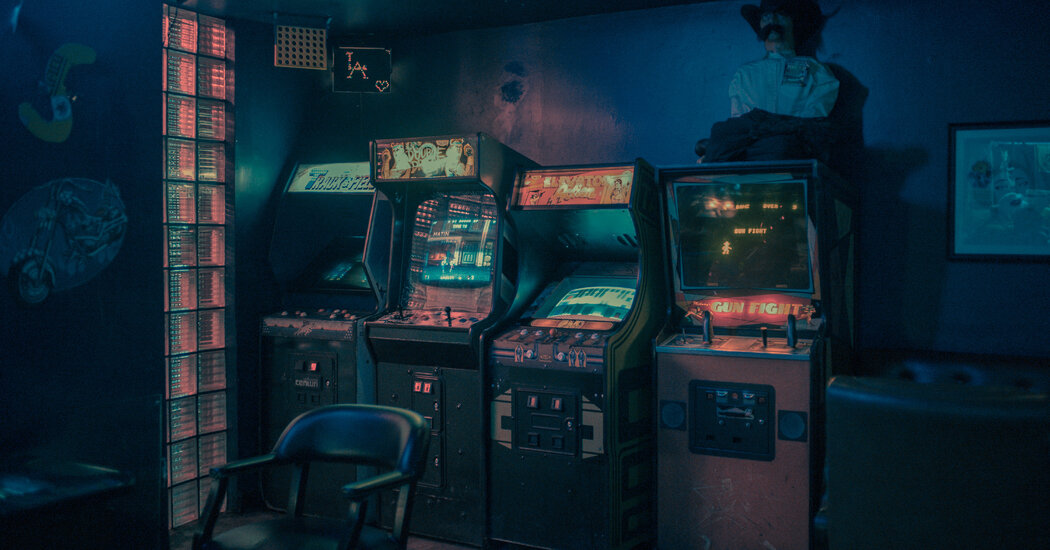I’ll always remember the first time I stepped into Blipsy Bar on N. Western Avenue, in Los Angeles’s Koreatown. I felt like a teenager from the ’80s, here to escape the humdrum of the Hollywood crowds. I settled into the moody, retro atmosphere, watching people buy cheap drinks and looking nostalgically at the arcade games on offer: Ms. Pac-Man, Gun Fight, Track & Field, Paperboy.
The wall was lined with stuffed animals, the bar filled with vintage gadgets and toys. There was a dance floor and a disco light. In a way, the people around me had come here to escape reality, to immerse themselves in a digital alternative — and yet it all felt authentic.
For me, it was the beginning of a project that would become an obsession. I grabbed my small Leica and began shooting in the darkness with a wide-open aperture. I made a few photographs before the bartender caught me.
“Hey. No more pictures,” he said.
Although I grew up in France, I’ve long been interested in the arcade cultures in both Japan and America.
My fascination is partly a result of seeing these places portrayed in popular films, from “Jaws” and “Terminator 2” to “Back to the Future Part II” and “Ferris Bueller’s Day Off.” But arcades also remind me of my own childhood experiences — particularly during my teenage years, when, alone or with my friends, I’d hunt down a Street Fighter or Pac-Man arcade, or lose myself on a home console: Atari, Nintendo, Sega.
When I first arrived in Los Angeles, in 2018, I found the city difficult to make sense of, difficult to navigate. I’d never spent time in a place so sprawling. Visiting and documenting the city’s arcades gave me a framework through which to explore — first within the bounds of the city itself, and then into the beach towns and desert oases of Orange and Riverside counties.
My goal, in part, was to capture contemporary photographs that might just as easily have been taken in the ’80s or ’90s.
I was also drawn by the diversity of the people and the environments. Each arcade draws a slightly different crowd, from beachgoers and barhoppers to seriously committed gamers. The atmospheres vary, too — some bright, pristine, ordered; some dark, moody, covert.
Arcades and other gaming spaces have a long — and complicated — history in Los Angeles. In 1939, the city banned a wide range of them, including pinball and claw games, declaring them to be nuisances in public spaces. Archival photographs show some games being…
Click Here to Read the Full Original Article at NYT > Travel…
